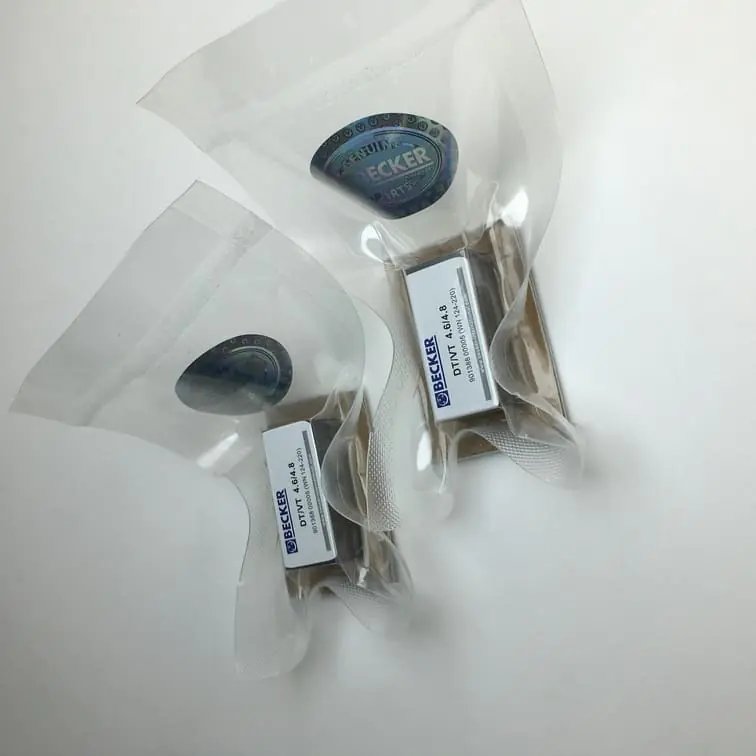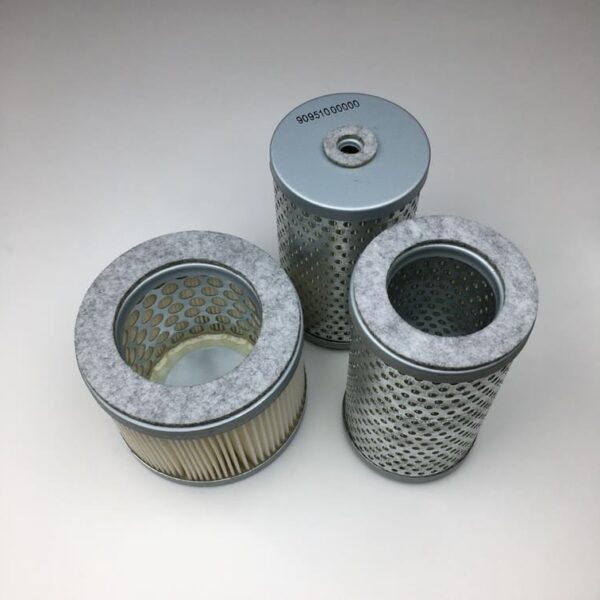The 2012 Volkswagen Golf is a popular compact car known for its great balance of performance, fuel economy, and reliability. One of the critical components in this vehicle, especially for ensuring optimal braking performance, is the vacuum pump. But what exactly does the vacuum pump do in the 2012 VW Golf, and why is it important? This article will answer those questions by explaining the function of the vacuum pump, its role in vehicle performance, and what drivers should know about maintaining this vital part.
Understanding the Role of the Vacuum Pump in the VW Golf
What Is a Vacuum Pump?
A vacuum pump is a mechanical device that plays a crucial role in various automotive systems by generating the vacuum pressure required for several functions. In a car like the 2012 VW Golf, the vacuum pump is primarily responsible for creating vacuum pressure to assist with braking, and in some cases, to power other ancillary systems.
Key Functions of the Vacuum Pump:
- Brake Booster Assistance: The vacuum pump generates the vacuum pressure required for the brake booster to function effectively. This ensures that less force is required when pressing the brake pedal, providing smoother and more efficient braking.
- Emission Control Systems: Some vacuum pumps also provide vacuum pressure for emission control valves, ensuring optimal emissions during engine operation.
- Turbocharged Engines: In vehicles equipped with turbochargers, such as some variants of the VW Golf, a vacuum pump can provide additional pressure for controlling turbo-related components.
In the case of the 2012 VW Golf, the vacuum pump is specifically important for assisting the brake booster, which directly affects the vehicle’s braking efficiency and overall safety.
The Importance of the Brake Booster in the 2012 VW Golf
What is a Brake Booster?
The brake booster is an integral part of the braking system that helps reduce the amount of force a driver needs to apply on the brake pedal. It essentially “boosts” the pressure from the brake pedal to the master cylinder, making braking more responsive and less strenuous.
- Vacuum Power: The brake booster relies on vacuum pressure to operate effectively, which is where the vacuum pump comes in. Without a vacuum pump, or if the pump is not functioning correctly, the brake booster will not be able to provide the required assistance, leading to a harder brake pedal and less effective braking.
In the 2012 VW Golf, the vacuum pump is a vital support system for the brake booster, which is crucial for ensuring that the driver has smooth and efficient braking power under all driving conditions.
How the Vacuum Pump Supports the Brake Booster
The 2012 VW Golf vacuum pump ensures that the brake booster receives a consistent supply of vacuum pressure. This is particularly important for turbocharged versions of the Golf, where the engine’s natural vacuum supply can be inconsistent. Here’s why:
- Turbocharged Engine Challenge: Turbocharged engines often generate less natural vacuum because of the increased airflow. A vacuum pump compensates for this by providing the needed vacuum pressure for consistent braking.
- Idle and Low-Speed Braking: During idling or low-speed driving, the natural vacuum generated by the engine may not be sufficient to operate the brake booster effectively. The vacuum pump ensures consistent brake booster support, no matter the engine speed.
Types of Vacuum Pumps and How They Work
Mechanical vs. Electric Vacuum Pumps
In vehicles like the 2012 VW Golf, the vacuum pump can either be a mechanical or an electric pump:
- Mechanical Vacuum Pumps: These are typically driven by the engine and use a camshaft or crankshaft connection to generate vacuum pressure. In the VW Golf, the mechanical pump works directly with the engine, making it a cost-effective solution for generating vacuum.
- Electric Vacuum Pumps: Electric pumps are often used in newer vehicles, including hybrid or start-stop equipped models, where the engine is turned off at idle. These pumps are powered by the car’s electrical system, ensuring a reliable vacuum supply even when the engine isn’t running.
For the 2012 VW Golf, the most common setup is the mechanical vacuum pump, which works efficiently with the gasoline or diesel engine variants.
How Does the Vacuum Pump Work?
The vacuum pump generates a negative pressure that is then supplied to the brake booster. In the case of a mechanical pump, the action of the camshaft helps to create a vacuum by continuously sucking out air, which reduces pressure in the brake booster chamber. This reduction in pressure effectively amplifies the force applied by the driver on the brake pedal, resulting in a smooth and responsive braking experience.
Key Components of a Vacuum Pump:
- Rotor and Vane System: The rotor spins within the pump, and vanes help create chambers that alternately expand and contract to create a vacuum.
- Inlet and Outlet Valves: These control the air movement, ensuring that air is expelled properly, and that the system remains sealed.
Common Issues with the Vacuum Pump in the VW Golf
Signs of a Failing Vacuum Pump
Over time, the vacuum pump in a 2012 VW Golf can experience wear and tear, which may affect its performance. Here are some signs to look out for:
- Hard Brake Pedal: If the brake pedal becomes unusually hard and requires more force to press, it could indicate that the vacuum pump is not generating enough vacuum for the brake booster.
- Longer Stopping Distances: Reduced vacuum assistance will also lead to increased stopping distances, which is a significant safety concern.
- Engine Warning Light: Sometimes, the vehicle’s engine control unit (ECU) may detect a problem with the vacuum pump or its associated sensors, causing the check engine light to illuminate.
- Hissing Noise: A vacuum leak might be audible as a hissing noise, indicating that the pump or its connections are compromised.
Diagnosing and Replacing a Faulty Vacuum Pump
If you suspect that your vacuum pump is faulty, you should consider having it inspected by a qualified mechanic. Here are some common steps involved in diagnosing and replacing a failing vacuum pump:
- Check for Vacuum Pressure: A vacuum gauge can be used to check if the vacuum pressure being generated is within the specified range for your vehicle.
- Inspect for Leaks: Visual inspection of hoses and connections can help identify any obvious leaks or damage.
- Replacing the Pump: If the pump is confirmed to be faulty, it will need to be replaced. This typically involves removing the old pump, disconnecting vacuum lines, and fitting a new pump in its place.
Properly maintaining the vacuum pump is essential for ensuring that your braking system works effectively and safely.
Maintaining the Vacuum Pump for Optimal Performance
Regular Inspections
To keep the vacuum pump working properly, regular inspection and maintenance are key:
- Check Vacuum Hoses: Hoses that connect to the vacuum pump can develop cracks or leaks over time, leading to reduced vacuum pressure. Regularly inspect and replace any damaged hoses.
- Listen for Unusual Noises: If you hear any rattling or hissing noises, it may indicate that the vacuum pump or associated hoses need attention.
- Change Oil Regularly: Some vacuum pumps, particularly those found in diesel variants, may share oil with the engine. Keeping up with regular oil changes helps prolong the pump’s life and ensures smooth operation.
Common Maintenance Tips
- Replace Worn-Out Components: If parts of the pump are worn out or damaged, it is important to replace them immediately to avoid compromising the vehicle’s braking system.
- Use Genuine Parts: For replacements, always opt for genuine parts to maintain performance and reliability. You can check out high-quality vacuum pump parts such as the 90138800005 | WN 124-220 Original Becker Set of 5 Vanes for compatible replacements.

FAQs About the 2012 VW Golf Vacuum Pump
1. How does the vacuum pump affect the braking performance of my 2012 VW Golf?
The vacuum pump provides the necessary vacuum pressure to the brake booster, which significantly reduces the amount of effort needed to press the brake pedal. A failing pump can lead to a harder brake pedal and increased stopping distances.
2. Can I drive my car if the vacuum pump is faulty?
It is not recommended to drive with a faulty vacuum pump, especially if it affects the braking system. A failing vacuum pump can lead to reduced braking performance, making it unsafe to drive.
3. How often should I inspect my vacuum pump?
It is a good idea to inspect your vacuum pump during regular maintenance intervals, particularly if you notice symptoms like a hard brake pedal or unusual noises.
4. What causes a vacuum pump to fail?
Common causes of vacuum pump failure include normal wear and tear, oil contamination, or damaged internal components like seals and valves.
5. Is the vacuum pump covered under warranty?
Depending on your vehicle’s warranty, the vacuum pump might be covered. Always check with your dealer or warranty provider to understand what components are covered.
Conclusion
The vacuum pump in a 2012 VW Golf is an essential part of the vehicle’s braking system, ensuring that the brake booster receives adequate vacuum pressure to operate efficiently. By reducing the effort needed to press the brake pedal, the vacuum pump contributes significantly to driving safety and comfort. Regular maintenance and timely replacement of any faulty components are key to keeping this vital system working optimally.
If you’re in need of quality vacuum pump parts, check out Becker Air Filter replaces Becker 909540 to ensure your vacuum system remains reliable and effective. Proper maintenance will ensure that your 2012 VW Golf remains a joy to drive while keeping you and your passengers safe on the road.

